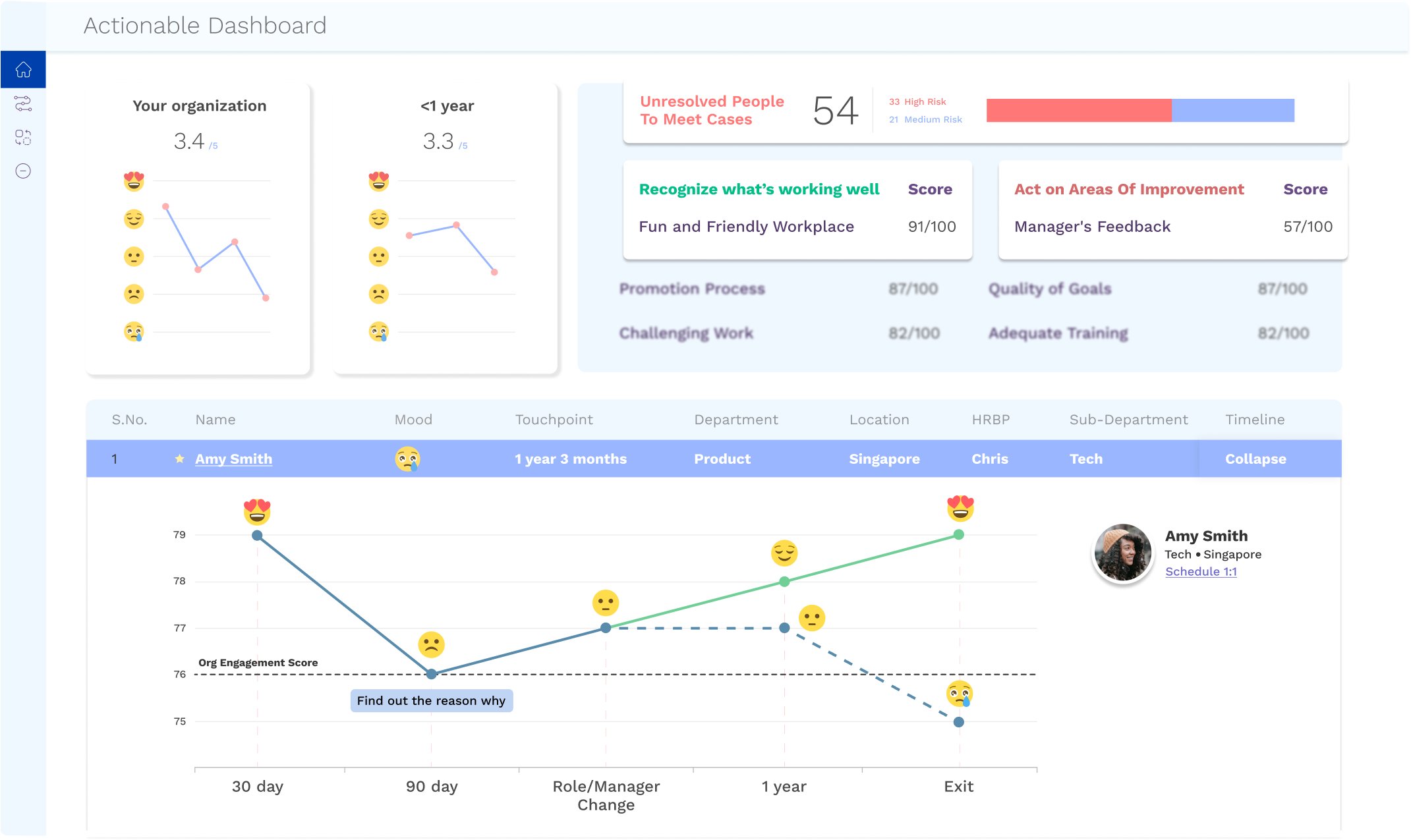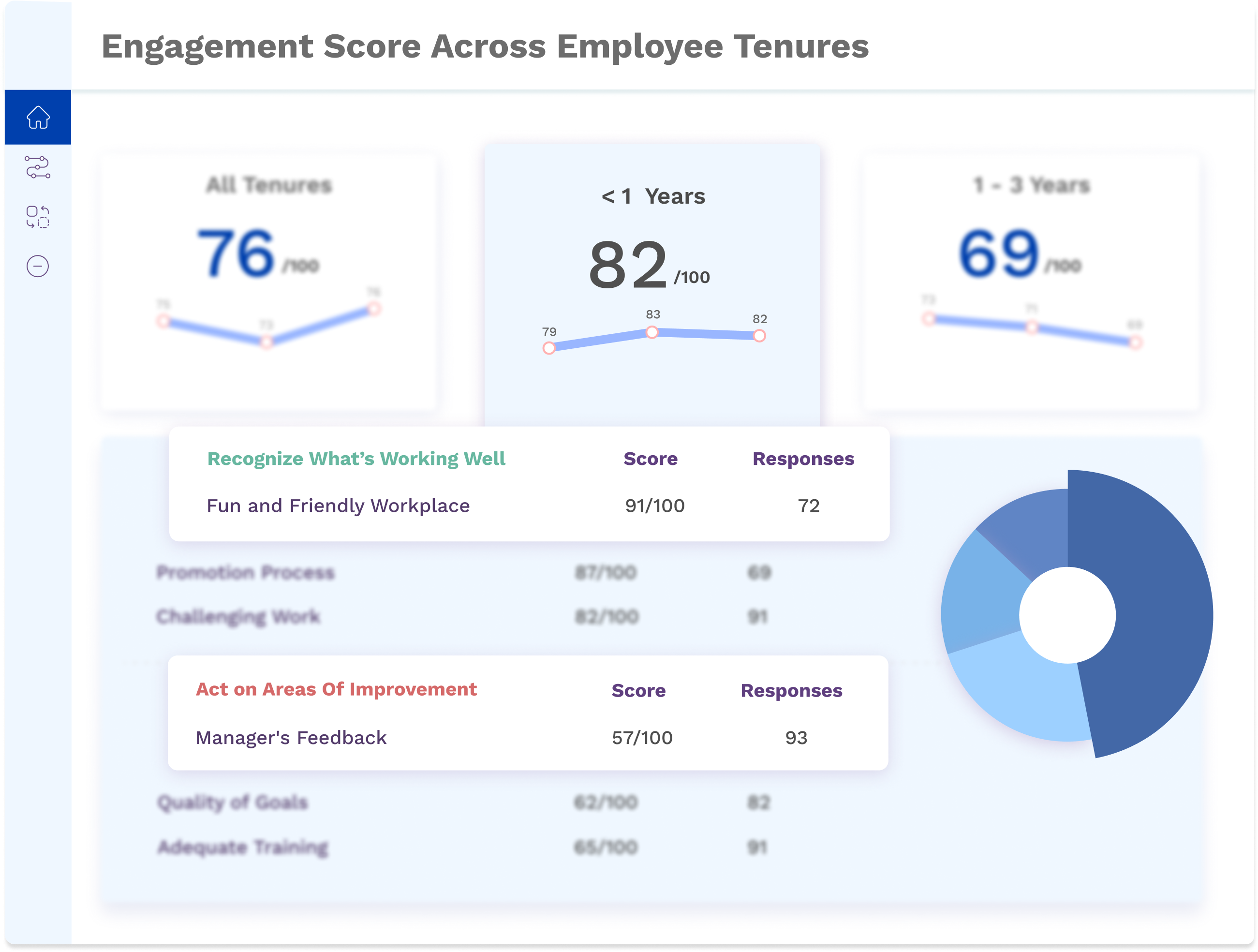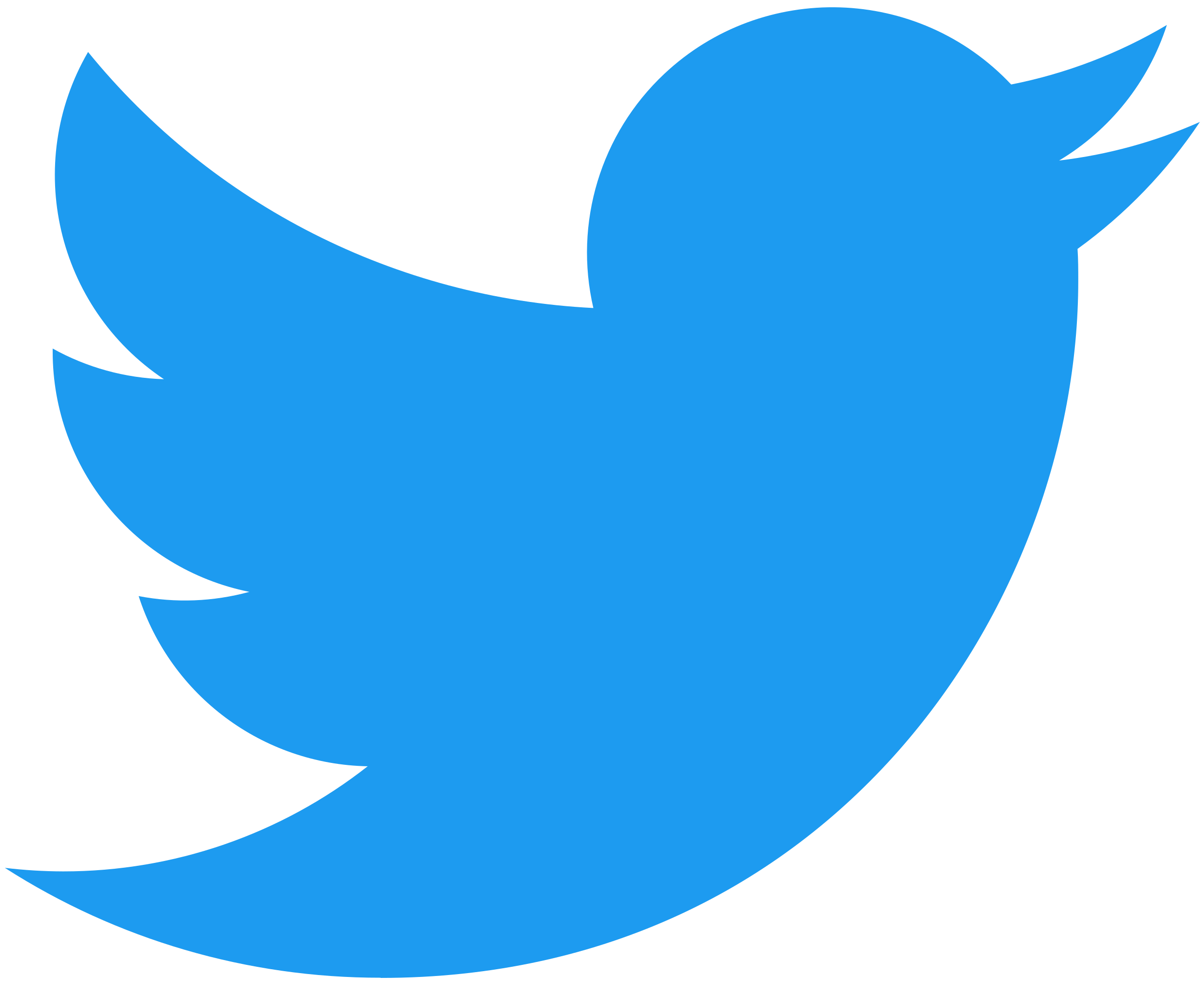Everything you need to know about People Analytics
What drives people to a job or away from it? And what makes them stay? These questions have hogged the discussions of HR leaders for decades. Understanding people has been a priority and a rather challenging one. But data and AI have emerged to help make your task easier.
The need for more refined data about employees and candidates gave birth to People Analytics. So what is people analytics?
It is the practice of collecting and analyzing data on all employee functions, policies, challenges, and opportunities. So, you scrutinize everything in your company and gather insights to help you make better business decisions.
It sounds obvious and simple because every organization maintains records of its people, processes, and the problems faced. But People Analytics is a powerful technique of drawing in-depth employee information. While you may call it HR Analytics or Workforce Analytics, it uses statistics and data interpretation tools for improved talent-related decisions. And it has changed a lot over the years.
How has People Analytics changed over the years?
People Analytics had to change because the transforming business dynamics demanded it. The pandemic only escalated what was already happening, that is how you collect and use data.
Two changes have emerged in the past five years.
- People Analytics has changed from focusing on the cure to prevention. The emphasis has shifted from Prescriptive Analysis to Predictive People Analytics. So, you’re better prepared to know how to predict and prevent issues based on existing data and history.
- The type of data gathered and insights drawn have changed too. Hiring, onboarding, retention, compensation, and skill development remain essential focal points. But they are now combined with performance metrics, engagement, productivity, and employee experience to draw a complete picture of the employee lifecycle.
Today you can weave a narrative with the existing data to help you identify concerns and their solutions faster. This transformation has allowed companies to connect the data better and draw insights not available earlier. Now you can predict, manage, and improvise your workforce operations and processes more efficiently.
A People Analytics dashboard can transform your HR strategies
Establishing a people analytics dashboard gets you deeper insights into employment, compensation, culture, and staff performance-related KPIs. Other key information include:
- Workforce metrics
- Employee turnover
- Talent monitoring: External vs internal hires and their ROI and the attrition rate
- Diversity and ethnicity details
- Career growth
- Staff tenure details
- Revenue versus costs analysis

Having such information brings many benefits such as:
1. Data-driven decision making
Increase hiring efficacy by 80% and cut employee turnover by half when you use data-driven advanced people analytics to evaluate hiring data. You can also improve recruitment processes when you know what went right and where you could have done better.
For example, with advanced People Analytics, IBM could identify the workers on the brink of resignation with 95% accuracy. This helped them make informed decisions in time and prepare to replace the at-risk employees without affecting the operations.
2. Proof-based HR strategies
People Analytics dashboard refines data and generates quality insights to understand your workforce efficiency and plan improvements. It can help you plan and execute HR strategies successfully.
For instance, Protective Life Insurance got all their employees to use People Analytics widely for decision-making. Managers could glean the current performance and true capabilities of their teams from the collected data. This helped them close skill gaps and increase frontline and middle-level staff participation.
After six months of trial, they opened the data access to all employees but specific to their teams and departments. Secured access to intensive data helped transform their staff efficiency and HR-related decision-making.
3. Better performance
These dashboards show the latest trends in employee performance and workplace culture and can help you decide the rewards and make improvements where needed. Access to such in-depth information can hike your business productivity by up to 25% if used well.
4. Increased savings
Reduced employee turnover and enhanced productivity bring in savings for your company. Employing People Analytics has enabled companies to enhance their gross profit margins by up to 4%, i.e. for every $1 billion earned in revenue, around $12.8 million are saved. A People Analytics dashboard indicates the areas that need your attention.
For example, Uber shared access to their People Analytics dashboard with all managers besides HR. Plus, their HR team took feedback from all managers to improvise the dashboard. It made their dashboard clearer and more robust. And it could resolve specific question-related queries.
Uber managers massively cut short their two-week timeline and costs related to decision-making.
5. Bridging skill gaps
64% of managers believe their staff doesn’t update their skillset according to the changing business dynamics. 70% of the employees think they haven’t even mastered the skill set required to succeed today at their jobs.
NASA used People Analytics for talent mapping and closing skill gaps. The dashboard highlighted the links between their employees, their skill sets, and the projects available. It helped them identify the employees who needed the training to succeed. It also enabled the staff to identify gaps in their career path and make changes.
These use cases prove the efficacy of People Analytics. And here’s how you can build it for your company.
Building People Analytics
1. Assess your business preparedness
A powerful tool like people analytics cannot be used to its full potential if your business is not ready for change. People analytics brings many transformations in how data is recorded, stored, and analyzed to what you do with the outcomes.
Often, a company's leadership needs to accept the incoming changes. Adopting people analytics makes your company fully data-driven, which invites changes in every process and policy. It’s a lot of change to deal with. Assess if your company and its people are ready to embrace and fully support this technology.
2. Define the strategy
Your people analytics strategy must align with your business plans and goals. Know what you want to achieve with people analytics and let that insight outline the process.
3. Select the Data Experts
Pick the data experts who can assist in switching to people analytics. Look for managers who have done this in previous jobs or employees who know about the new processes. Such people can help you fully integrate People Analytics into your system.
4. Understand your staff’s skillset
Strong people analytics software with pre-made solutions enable everyone to adapt to the new processes smoothly. Its goal is to learn to use the insights drawn by the system to make quicker and more effective business decisions. First, understand how comfortable your managers are in using people analytics. Although it is no rocket science, your firm’s analysts and data scientists can help people adapt to the new tech.
5. Ask the right questions
Companies don’t suffer from incorrect employee data, but rather inconsistent information that is of no use. People Analytics needs you to ask the right questions to give correct responses. Asking the wrong questions can alter its impact.
Two things can help you figure out specific questions:
- Defining the targets can help you stay focused and discover the insights you need to achieve them. You can begin by setting a realistic goal and using People Analytics.
- Knowing your existing challenges can guide you toward the search for solutions. Let your managers define their struggles with the staff and look for answers in the data.
Measuring key metrics in people analytics
There are three areas of people analytics that you must measure to get the big picture.
1. Workplace metrics
Data sets can, individually or in combination with other data sets, influence critical organizational dynamics. Keeping a tab on the following metrics is important:
- Open hiring demands
- Employee engagement scores that indicate how dedicated your employees are to the organization
- Employee Net Promoter Score or eNPS that evaluates how likely your employees are to recommend the organization to a friend.
- Employee mood surveys, comprising of just one question to assess their mood for the day in the morning.
- Time available to fill open demands
- Cost per recruit, including expenses incurred due to job adverts, agencies, talent management systems
- Number of candidates and interviews per vacancy
- Employee productivity
- Quality of work
- Absenteeism rate
- Accidents at workplace
- Data Security incidents
- Terminations
- Performance ratings
2. Employee feedback metrics
This includes employee data like their behavior and opinion. It can help you understand the factors impacting organizational performance and customer metrics.
The below tools help you gather employee data:
- Pulse surveys
- 360-degree feedback
- Employee lifecycle monitoring
- Performance reviews
- Interview and onboarding
- Candidate experience surveys
- Employee exit surveys
- Individual meetings
- Development program evaluations
Data collection is of no use if the final scores are low. For example, the eNPS survey and engagement scores reveal employee happiness levels. Besides, survey response rates are a great tool that show how much your employees participate in such exercises. You can calculate a survey response rates as follows:
Survey Response Rate = Number of Surveys Submitted / Number of Employees Invited
Most surveys like employee engagement and pulse surveys yield 76% response rate on an average.
Robust AI-based tech like Amber can help you gather and analyze this data by connecting with employees' feedback through one-on-one chats. It then generates valuable insights about your business and assists in informed decision-making.
3. Performance metrics
As leaders, you want to know how employee actions impact business performance. Here are a few metrics that can help you with people analytics.
- Revenue or profit earned per employee: Total revenue or profit divided by the number of employees
- Operating profit: It’s a percentage of revenue left after all expenses
- Earnings per share and returns: Profit receivable by shareholders
- Returns on Assets: Net income divided by total assets
Let’s see how you can use it in HR planning.
How to use People Analytics for HR planning?
People Analytics surpasses the typical questions and targets the most crucial areas. It answers problems like:
- Why is your company overspending on employee overtime?
- What are the implications of this overspending? Which areas are paying the price?
- Are your rewards aligned with the employees’ needs and demands? What are their returns?
There are seven pillars of people analytics that you can use for HR-related planning and decision-making.
1. Workforce planning analytics
Identify what type of talent you will need to achieve your company goals. Then, decide the questions you need answered, like age, experience, educational and work background, availability, and compensation expectations.
2. Talent sourcing analytics
Accurately locate the best candidates, evaluate them, and engage them. Talent sourcing analytics allow you to find the right mix of prospects that match your needs and budget. This tool uses data to optimize sourcing results.
3. Hiring analytics
Recruiting suitable candidates is a crucial investment for you and cannot go wrong. People Analytics’ hiring tool picks whom to interview, how to shortlist candidates and sets up interview questions that show candidates' suitability for the post.
4. Onboarding analytics
Once you have hired, engage the employees through onboarding, training, and helping them settle into the system. The engagement analytics tool can help create a great first impression for the new employee and ensure productive onboarding. You can gather information like:
- Impact of onboarding on employee loyalty and performance
- How does onboarding affect staff turnover
- How much to spend on employee onboarding?
5. Employee engagement and performance management analytics
Engaged employees are enthusiastic, motivated, dedicated, and perform well. You can analyze employee engagement through surveys and interviews, candidate feedback, industry practices, and techniques to boost employee morale. Or you can employ employee engagement tool to deeply understand employee dynamics. It analyzes staff happiness levels and alerts you in case of any disengagement.
6. Attrition and retention analytics
Gather and analyze internal and external business intelligence to know facts like:
- The best performers at a high risk of quitting
- When will they quit?
- How can you retain employees?
Employee retention depends on identifying the at-risk candidates on time and figuring out how to stop them. People Analytics merges employee, company, and market data to give you actionable insights about the best employees and how to retain them.
7. Health and safety analytics
Employee well-being impacts their and the company's performance. This analytical tool helps you gather data like:
- How does employee happiness affect customer satisfaction?
- How does employee health affect company productivity?
- How employee well-being influences your retention and acquisition metrics?
How People Analytics benefits your HR planning
People Analytics benefits your HR planning in various ways. These include but are not limited to:
- Improved training programs: With better staff insights, you know exactly which areas need improvement
- Better culture: Knowing worker satisfaction scores and what makes them happy can enhance your office environment.
- Fewer employee exits: People Analytics can reduce your attrition by up to 50%.
- Increased productivity: With in-depth data, you always know what’s affecting employee productivity positively and negatively. It enables you to remove such roadblocks.
- Improved customer experience: Happy employees make customers happy, too, by delivering exceptional services.
These tools of People Analytics have been refined over the years to accommodate altered business dynamics. Let’s see the current trends in the domain and its future.
Current trends and the future of People Analytics
You have seen almost everything in the past three years; the pandemic, the post-pandemic era, returning to work in a hybrid environment, and the wave of Great Resignation. Every scenario calls for a more data-driven approach to management. While it has impacted overall confidence, specific trends have deepened the need for the People Analytics strategy.
- Remote and hybrid work environments have propelled the need to employ more data-driven decision-making
- A larger focus on diversity and inclusion demands that you have access to in-depth data about your employees and their backgrounds.
- HR leaders use People Analytics to prioritize and enhance employee experience
- Data-driven decision-making in all business areas
- Increased dependence on AI and AI-enabled tools for understanding business dynamics and increasing efficiency
- Using People Analytics to build engaging narratives, humanize data and get more real in managing people
- Advancement of intuition-based people analytics (driven by facts and data, of course)
- User focus on employing HR tech in companies, so your employees are open to technological change in the company
The future of People Analytics is more simplified. So if you are concerned about how you or your non-data scientist employees will cope with this tremendous shift, you can relax. AI is here to simplify our tasks, and People Analytics is bound to get simpler and more accessible. The more you depend on it, the more it will be readily available and easily employable.
And let’s face it, it is hard to imagine a company not being data-driven today. It will be impossible to survive without People Analytics in the future.
Conclusion
People Analytics is not a new technology. It is a refined way of thinking and using the same old resources. Employees have become equally important as the customers, if not more.


 Twitter
Twitter Facebook
Facebook LinkedIn
LinkedIn